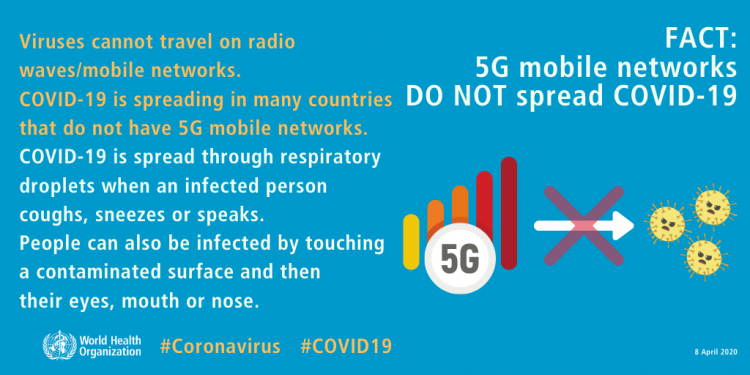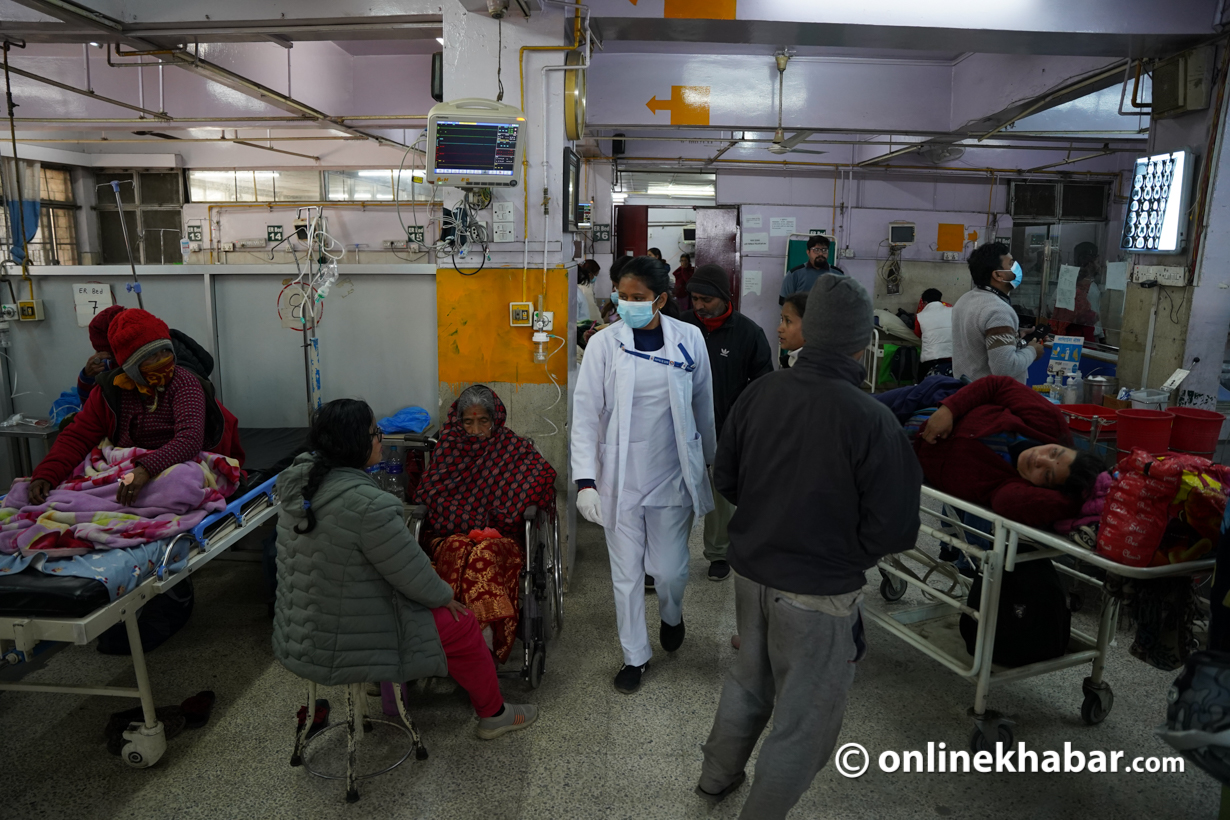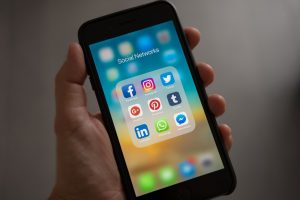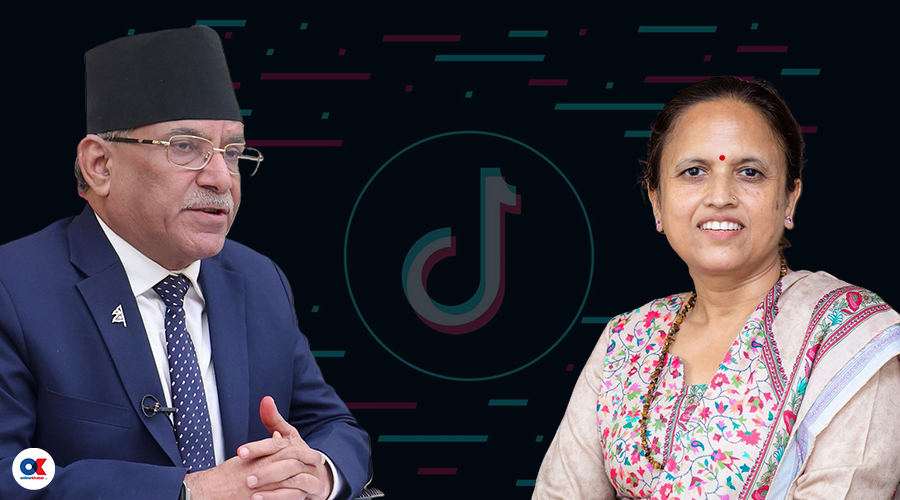A false claim about 5G, which is the fifth generation of wireless telephony, is circulating among social media users in Nepal. The claim along with photos of anti-5G protests says Nepal has fewer Covid-19 cases because it has not rolled out the 5G technology; the pandemic is surging in India due to the 5G radiation and the death rates are high in the Indian states where the technology has been launched.
A Pokhara-based photographer and disk jockey, Ohm Lama, shared the post and photos on Facebook on May 9. His post has been shared by more than 4,500 people.
The post reads as follows:
“Since Nepal has not yet launched 5G, Covid cases are fewer here. And, even the existing Covid cases here were caused by the radiation from 5G in India. In India, wherever 5G services have started, the death rates have been rising. For example, 5G testing is currently underway in Bombay, Madhya Pradesh, Uttar Pradesh, Delhi and Karnataka. And, in their surrounding areas, people have shown various symptoms such as burning sensation and redness in eyes, dry throat, excessive thirst, breathing difficulties, etc.”
The same content has been shared on Facebook here, here and here. The claim includes photographs of the anti-5G protests in London of the UK and in Amsterdam of the Netherlands.
Last year, similar claims had gone viral in various European countries including the United Kingdom. India’s Alt News and Factly have also fact-checked such claims.
Now, South Asia Check has investigated the false claim, which is currently circulating among Nepalis.
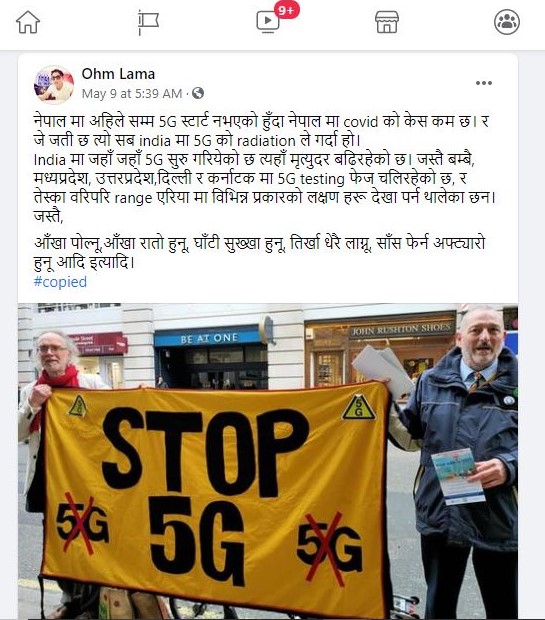
5G is the most advanced technology for mobile phones. The fifth-generation technology will radically change the way people use the internet in their life. Madhu Sudan Dahal, a senior telecommunications engineer at Nepal Telecom, tells South Asia Check that 4G service is currently available in Nepal and 5G is only being tested. 5G is a more advanced technology than 4G, Dahal says. In order to operate 5G, telecom companies need to update and upgrade hardware (such as antennas) and software, according to him.
While it is true that mobile phones spread electromagnetic waves, various studies have shown them to be harmless, the telecom engineer says. “People may have been misled by the fact that both the electromagnetic waves the mobile phone generates and the coronavirus are invisible,” he says. “The electromagnetic waves cause no harm.”
Here is how the frequency of mobile telephony works, according to him: “When we speak over a mobile phone, our voice is picked up by the nearest tower via waves. It then reaches the server of the telecommunications service provider, which in turn sends it to the nearest tower to the person we are calling. The tower that gives the best signal transmits my voice.”
In order to provide high-speed internet via 5G, telecom service providers install many small cell sites to poles, walls or towers (unlike previous networks, which used huge towers), according to experts.
In India, telecom companies including Reliance Jio and Bharti Airtel have tested the 5G technology in various cities, but they are yet to roll out the service for consumers. While it is true that the Indian states mentioned in the Facebook post had seen a surge in Covid-19 cases in India, the claim that the 5G technology is being tested in those states is wrong.
In its fact sheet published last year, the World Health Organization (WHO) said the coronavirus does not spread through 5G mobile networks. “Viruses cannot travel on radio waves/mobile networks. Covid-19 is spreading in many countries that do not have 5G mobile networks,” the WHO said.
Before the launch of 5G in the UK last year, the Chinese mobile company Huawei, which is involved in building the 5G infrastructure, faced rumours that it would spy on the mobile users, so this time some people might have used the coronavirus to spread misinformation about the 5G technology, according to Dahal, the telecom engineer. “People suspected that the government could use the technology for the surveillance of its citizens,” he says.
This article first appeared on South Asia Check.



